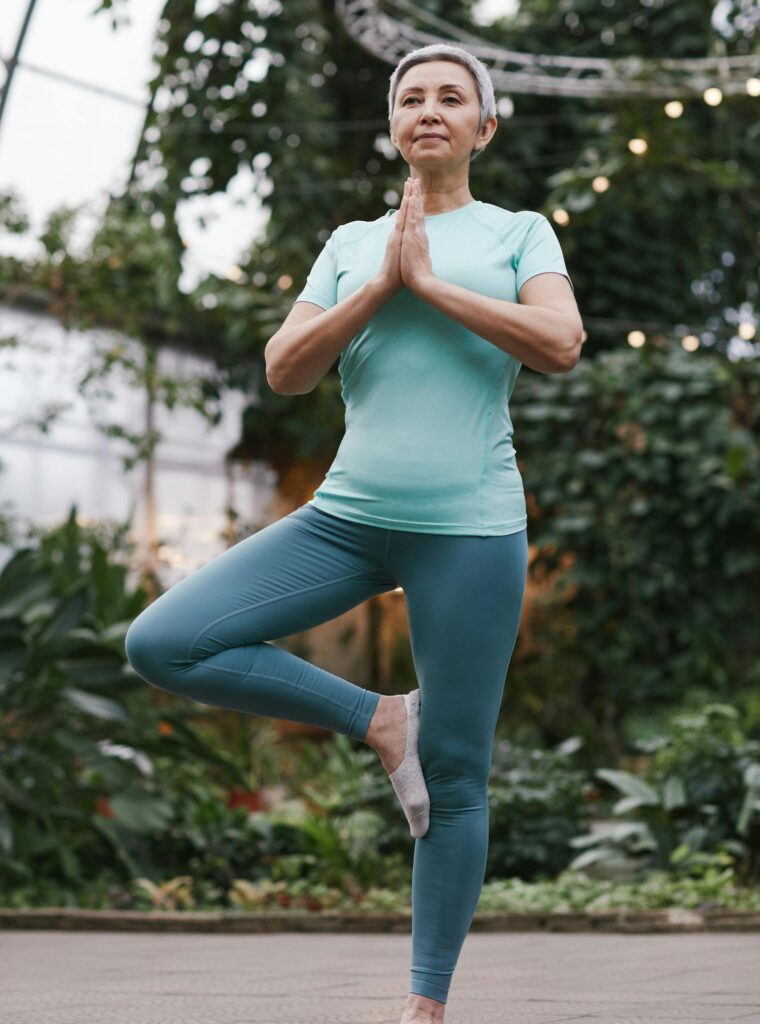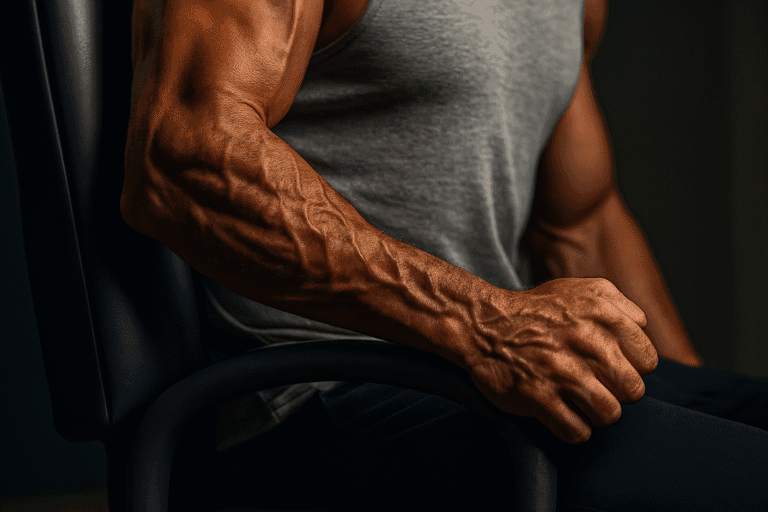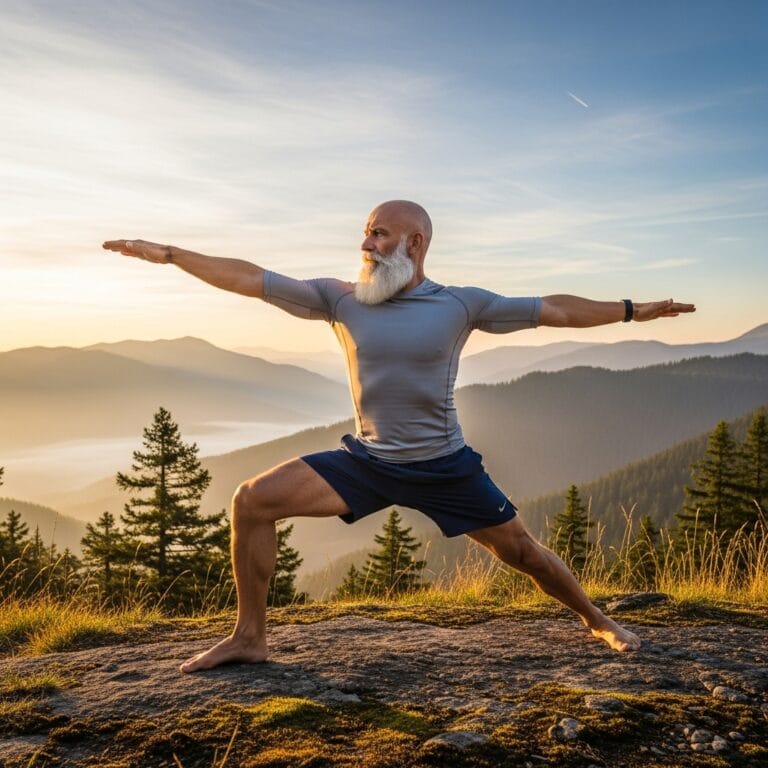FREE SHIPPING OVER $50
Struggling With Balance? This 1 Daily Habit Could Keep You Steady for Life

You might not realize it, but your balance is the foundation of almost everything you do. From simply walking down the stairs to carrying groceries or stepping off a curb, your body relies on a complex system of internal signals to keep you upright. Unfortunately, as we age, this system tends to degrade, making simple movements feel wobbly and significantly increasing the risk of dangerous falls. If you find yourself consistently needing to reach out for a wall or handrail, or if you simply feel less steady on your feet, it’s a clear sign your body is asking for a targeted tune-up.
The good news is that restoring and maintaining excellent balance doesn’t require hours in the gym or complex equipment. It comes down to consistency with one incredibly simple, scientifically-backed daily habit. This exercise is easy to integrate into your existing routine and targets the core components of your body’s stability system, helping you build better awareness, stronger stabilizing muscles, and a more robust defense against the falls that often derail independence.
The Science of Stability: Why Balance Declines
To appreciate the power of the Single-Leg Stance, you need to understand why balance starts to fade in the first place. Balance is not just about muscle strength; it’s a neurological skill governed by three main systems:
- Vision: Your eyes tell your brain where you are in space relative to your surroundings.
- Vestibular System: The fluid-filled canals in your inner ear tell your brain about your head’s movement and orientation.
- Proprioception: This is your body’s ability to sense its own position and movement. Sensory receptors in your joints, muscles, and tendons constantly feed information back to your brain, allowing for tiny, instantaneous corrections to maintain stability.
As we age, all three systems decline, but the decay of proprioception and the weakening of the small stabilizing muscles around the ankle, knee, and hip are major culprits for the feeling of unsteadiness. The Single-Leg Stance is the ultimate, accessible tool for training and preserving all these elements.
The Core Habit: Mastering the Single-Leg Stance

The Single-Leg Stance, or standing on one foot, seems almost too simple to be effective, but its brilliance lies in its direct challenge to your stability systems. When you stand on one leg, you immediately shrink your base of support, forcing your deep core muscles and the small, fast-twitch stabilizer muscles to activate simultaneously.
How to Start Your Daily Habit
The beauty of this habit is that you can integrate it into existing downtime, making consistency effortless.
- Start Small: Begin by standing next to a sturdy object (like a counter or a wall) that you can touch quickly if needed.
- Lift One Foot: Lift one foot a few inches off the floor. Do not allow your lifted foot to touch your standing leg.
- Find Your Focus: Look straight ahead at a fixed point on the wall. This minimizes input to the vestibular system and focuses the challenge.
- Hold Time: Start by aiming for 30 seconds on each leg. Studies have shown that the ability to hold a Single-Leg Stance for 30 seconds is highly correlated with overall physical independence and a lower risk of falls.
- Consistency: Practice this habit at least once per day, ideally twice—in the morning while brushing your teeth, and again in the evening while waiting for the kettle to boil.
Progressing Your Balance Training: Making It Harder
Once you can comfortably hold the Single-Leg Stance for 30 seconds on each side without wavering, you need to deliberately challenge the system to continue improving your balance and stability. Remember, the body adapts quickly, so the key to longevity fitness is constantly introducing new stimuli.
Progression 1: Removing Vision (The Ultimate Challenge)
The easiest way to make this exercise harder is to take away one of your three stability inputs.
- The Stance: Stand on one leg.
- The Action: Once steady, slowly close your eyes. You will immediately feel a significant drop in stability as your body loses its visual anchor and relies solely on proprioception and the inner ear.
- Goal: Aim to hold for 10 to 15 seconds with your eyes closed. This specific exercise is fantastic for increasing the sensitivity of your foot and ankle stabilizers, making you less likely to lose balance when walking in the dark or on uneven ground.
Progression 2: Adding Movement (The Functional Test)
To ensure your balance translates to real-world tasks (like reaching for something or climbing stairs), you must introduce controlled movement while maintaining the stance.
- The Stance: Stand on one leg.
- The Action: Start with a simple movement. Try reaching your hands forward, then overhead, then out to the sides. Alternatively, try closing your eyes and turning your head slowly from side to side (a great challenge for the vestibular system).
- Goal: Practice the “Clock Reach”: Imagine a clock face around you. Point your lifted foot or hand to the 12, 3, 6, and 9 o’clock positions without touching the ground.
Progression 3: Changing the Surface (Simulating Real Life)
Real-life scenarios like walking on carpet, grass, or cobblestones require your body to adapt to uneven surfaces. You can simulate this safely at home.
- The Stance: Stand on one leg.
- The Surface: Place a folded towel, a thin foam mat, or a low throw pillow beneath your standing foot.
- The Challenge: The soft, unstable surface forces the micro-muscles in your foot and ankle to rapidly activate and adjust to a constantly shifting base, dramatically improving overall stability.
Beyond Balance: The Hidden Benefits
The Single-Leg Stance offers benefits that extend far beyond simply preventing falls, making it a truly comprehensive longevity habit.
1. Core and Hip Strength
This exercise requires immediate activation of the deep abdominal muscles and, critically, the gluteus medius—the primary side-of-the-hip muscle responsible for pelvic stability during walking. Weakness in the gluteus medius is a major cause of knee pain, lower back pain, and a wobbly gait. By performing the Single-Leg Stance, you are effectively strengthening this core stabilizing muscle with every repetition.
2. Improved Posture
To maintain the Single-Leg Stance, you are forced to stack your head, shoulders, and hips perfectly over your standing ankle. This simple alignment practice encourages better posture throughout the rest of your day, reducing strain on your spine and promoting a more upright, youthful stance.
3. Foot and Ankle Resilience
Your feet and ankles contain a wealth of sensory receptors that are vital for balance. Consistent Single-Leg Stance practice increases the strength and resilience of the tendons and ligaments in your feet, making them more robust against sprains and twists—a key factor in maintaining long-term mobility.
4. Bone Density Maintenance
Because the Single-Leg Stance is a unilateral (one-sided) exercise, it provides targeted, gentle stress to the bones of the hip and leg, encouraging mineral density. Maintaining bone density is crucial for preventing fractures later in life.
Making It a Non-Negotiable Daily Habit
The true power of the Single-Leg Stance is its ease of integration. Aim for a total of two minutes per leg, per day. Here are a few ways to easily build this habit into your day:
- The Brushing Challenge: Stand on one leg for the first minute of brushing your teeth, and switch to the other leg for the second minute.
- The Waiting Game: Practice while standing in line at the coffee shop, waiting for a microwave to finish, or while doing dishes.
- The TV Test: Practice during commercial breaks or during the beginning of a favorite show.
Final Thoughts
Balance is not a luxury; it is a fundamental component of independent aging and overall fitness. The Single-Leg Stance is the single most powerful, accessible, and scientifically effective habit you can adopt to actively preserve your mobility, dramatically reduce your risk of falls, and ensure your stability for life. By committing to just a few minutes of this simple exercise every day, you are making a profound investment in your future self, guaranteeing that you remain steady, strong, and confident on your own two feet.
Related Articles
- Fix Your Posture at Home With These 5 Back Moves—No Equipment Needed
- Sick of Chronic Migraines? These 6 Yoga Moves + Breathwork Could Be Your Natural Relief
- Trainers Swear By This 20-Minute Walk Trick to Melt Belly Fat Fast—No Gym Needed
- Stop Doing Planks! The 5 Bodyweight Moves That Guarantee a Smaller Waist After 40
- Pilates Trainer Drops Her Go-To 5-Minute Core Workout—And It’s All About the Weights



